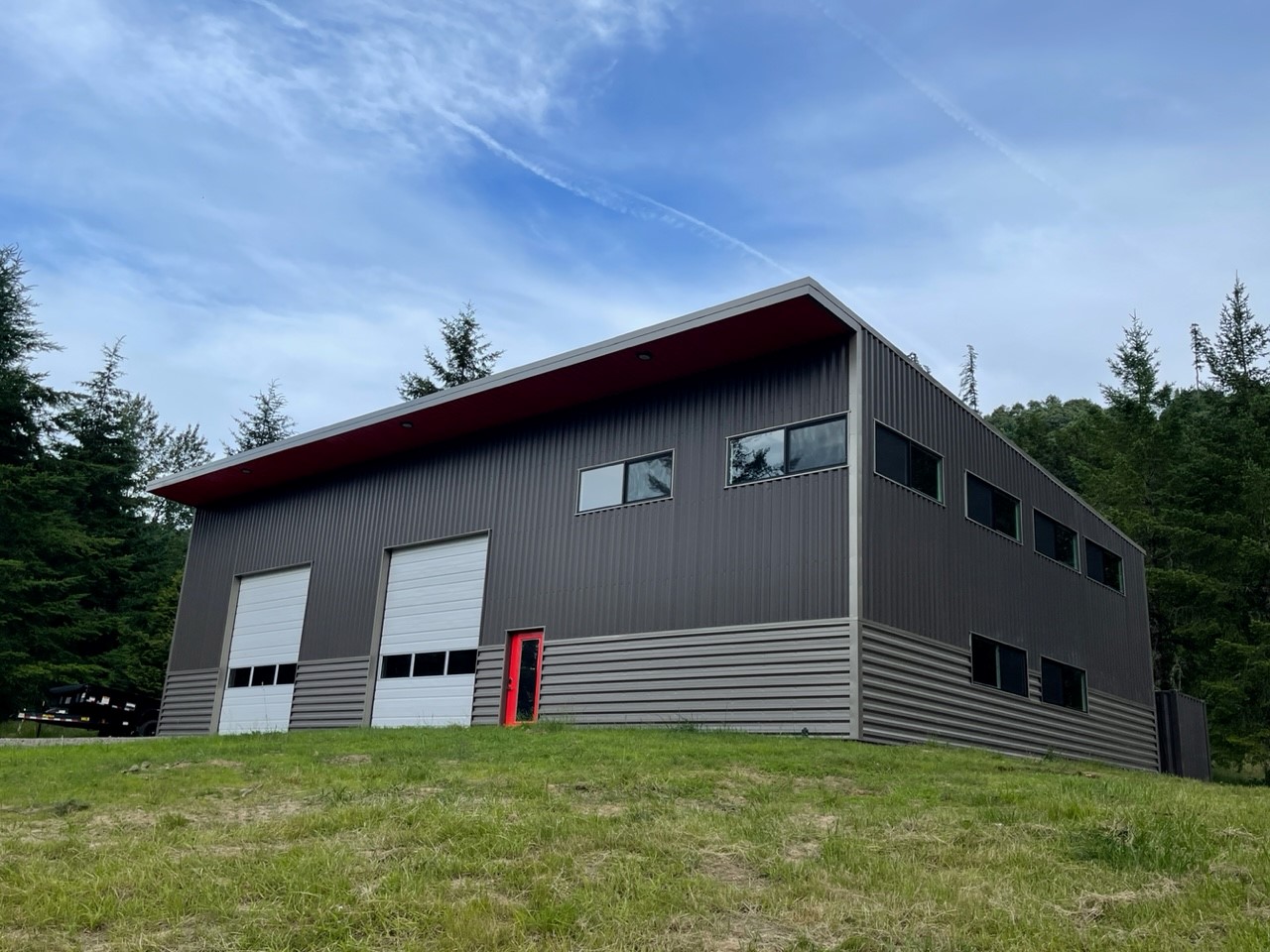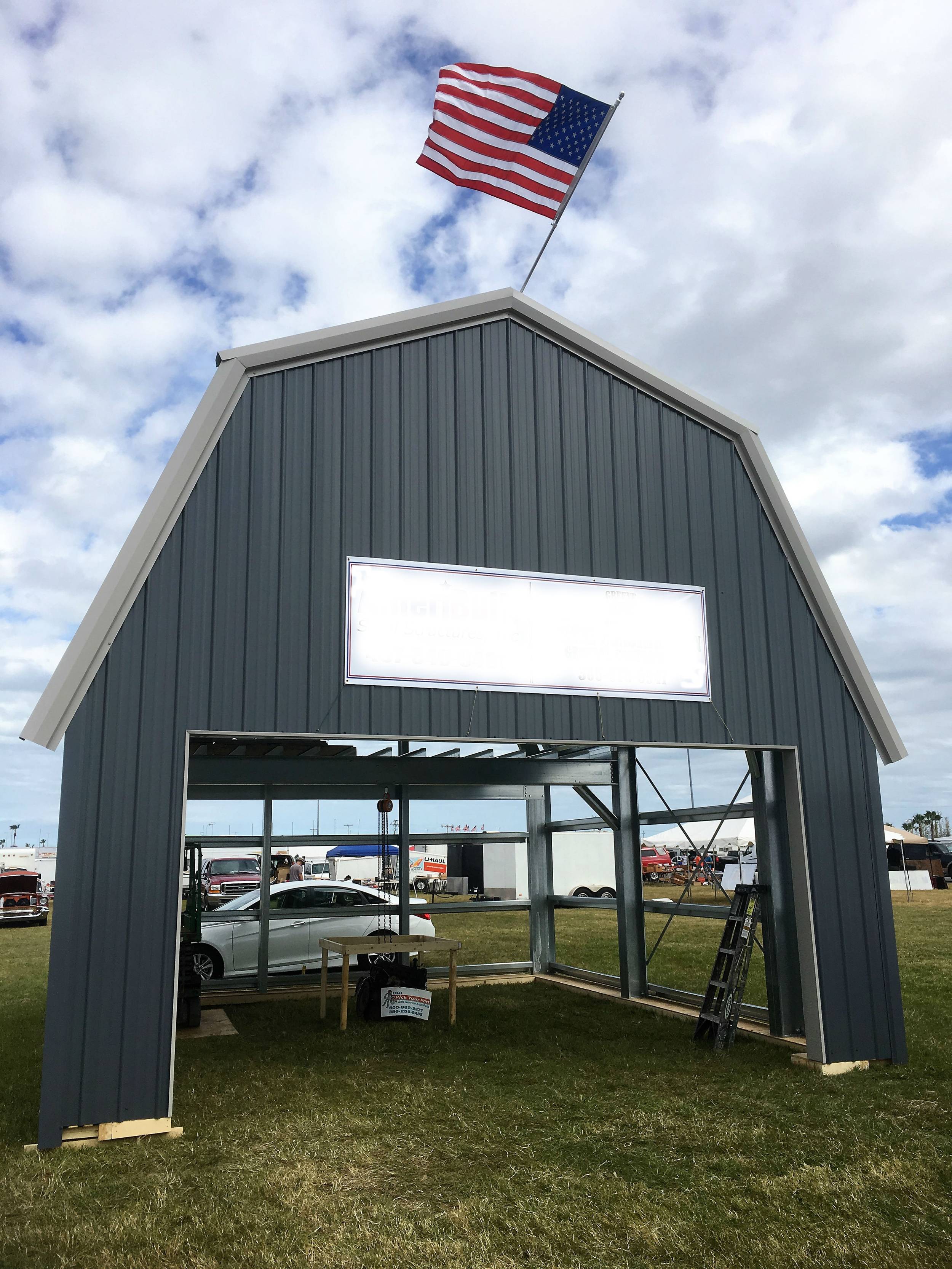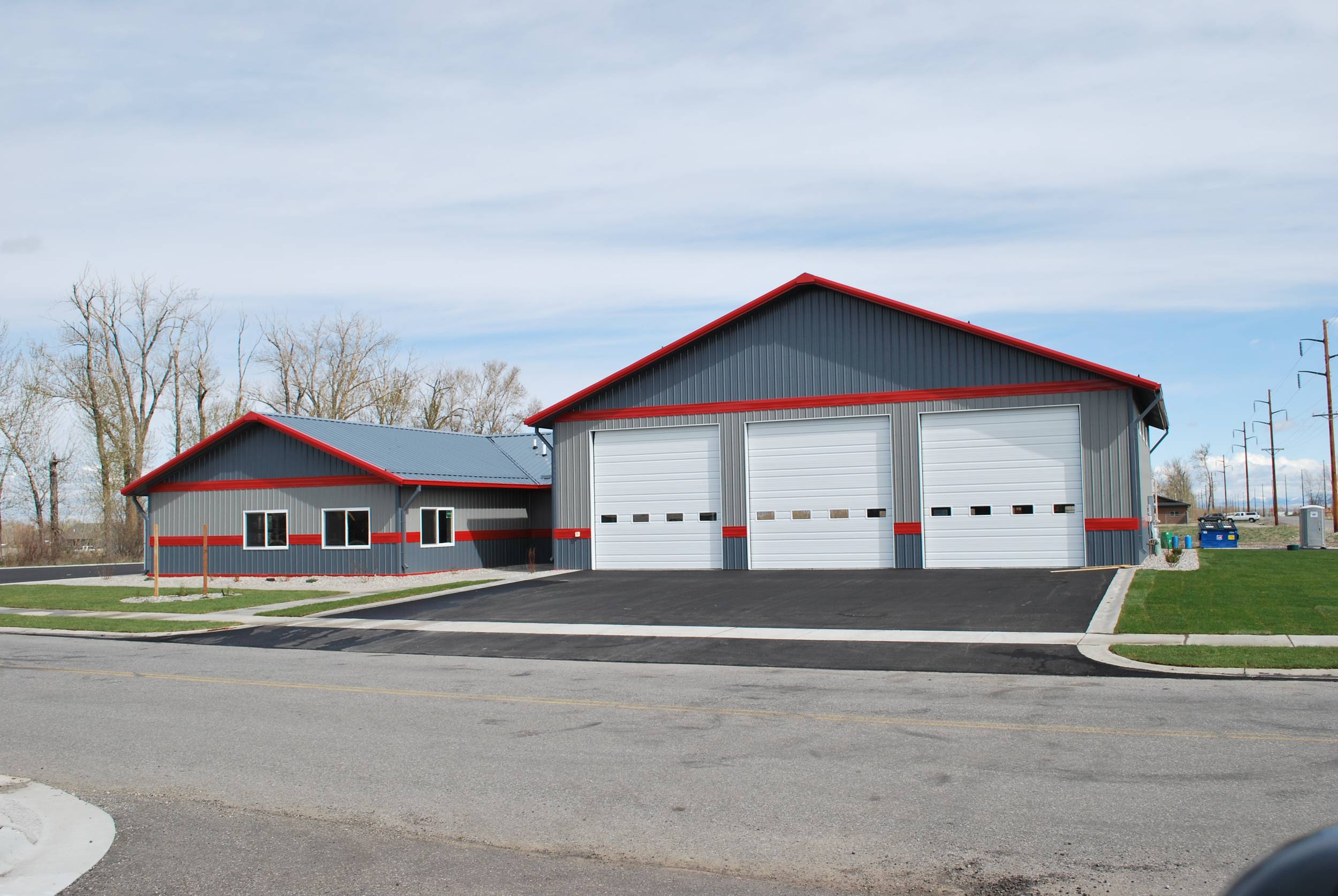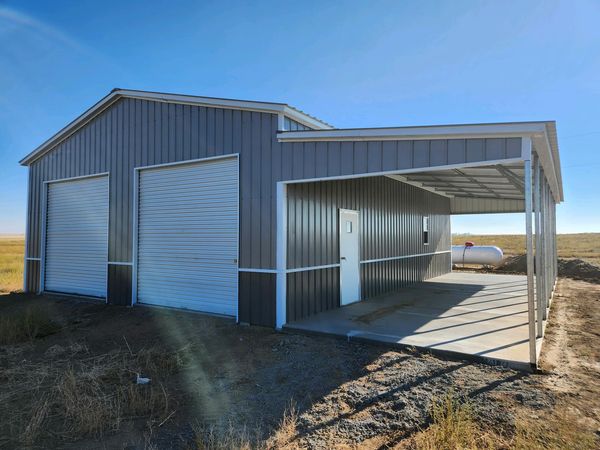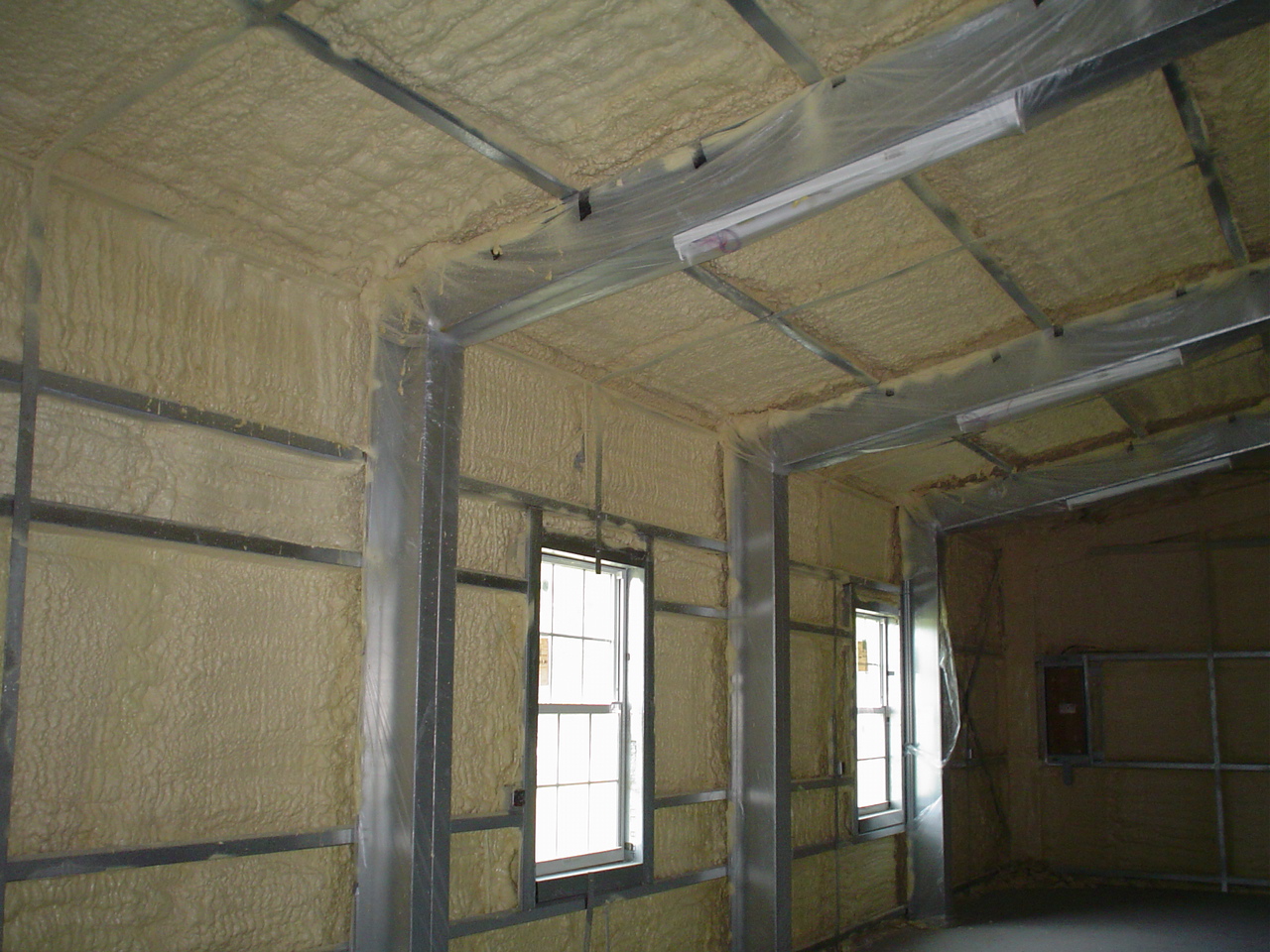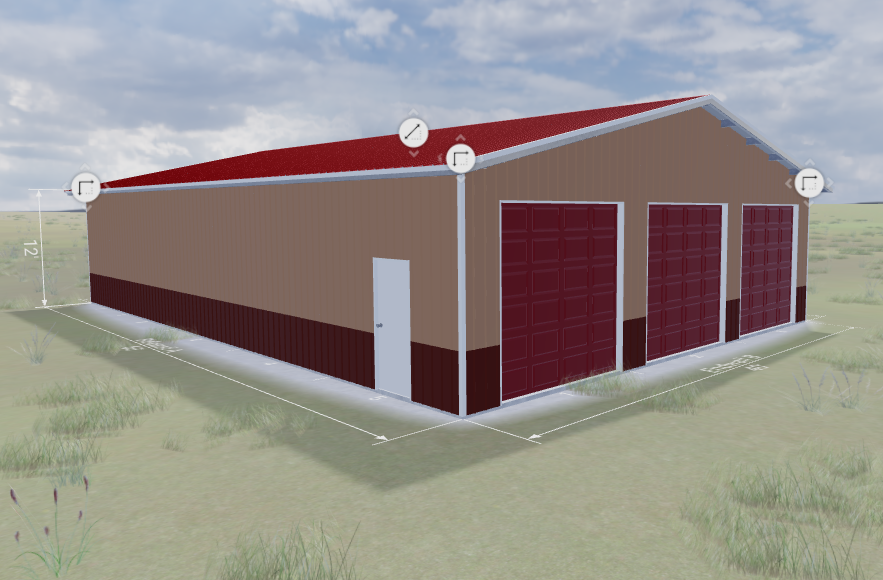

Feb 25 2024 | METAL BUiLDINGS | BUYERS GUIDE
Everything you need to know about buying a metal building from start to finish without getting ripped off.
Buying a metal building is a big investment and by the time you finish reading this guide, you'll be able to shop smart and get the dream building you've always wanted.
You're about to discover:
✅ The 4 Different Types of Metal Buildings & Which One is Right For You
✅ How To Avoid Getting Scammed By Online Building Dealers
✅ How Much Metal Buildings Cost & How to Get The Best Price
✅ The Different Metal Building Styles - From Simple Garages to Barndominiums
✅ Insulation - Why You Need It & The Different Types
✅ The Easy Way to Secure Financing For Your Metal Building
✅ How to Design & Price Your Dream Building Online Without Talking to a Salesman
✅ The "In's & Out's" Of Getting a Permit For Your Metal Building
✅ Prepping Your Your Building Site - What You Need to Know
✅ How To Find The Best Contractors: Erection, Dirt Work, Concrete & More
✅ How To Get a Free Building Design Consultation & Quote - Without Pushy Sales Tactics or B.S.
Are you ready to become a Metal building expert? Grab a notepad and pen and let's get started!
1. The 4 Types of Metal Buildings-Which One Is Right For You?
On the outside, most metal buildings look the same. The roof and walls are covered with corrugated metal panelling, typically called Pro-Panel or PBR-Panel. Without seeing the inside of the building you don't know if the frame is cold-formed, red iron, wood or tube steel.
Does it matter? Yes!
It's important to understand the difference so you can narrow down exactly which type of building you need. Not knowing this could cost you thousands. You could even be denied a building permit after placing a deposit on a building. Let's dig in to the 4 metal building types so you can decide what's best for you.
Tube Steel Buildings: These buildings are constructed out of 2.5" galvanized tube steel and typically sheeted with 29ga sheet metal paneling. These buildings are not rated for living in and are limited to 40ft wide in most cases. They're an affordable solution for storage space, garages, barns, carports and RV covers. Tube steel structures are not ideal for high wind and snow load areas.
Pros:
🔥Affordable solution for smaller structures 30' wide or less
🔥Quick install - 2-5 days depending on size
🔥Price includes delivery and install
🔥Galvanized steel frame - rot and rust resistant
🔥Generic engineered building and foundation plans included
Cons:
💀 Not rated for living in
💀 Big price jump at 30'+ wide
💀 Some building departments will not permit/allow tube steel structures
💀 Not available nationwide and/or in some high snow and wind load areas
💀 Lead times can vary from 2 weeks to 6+ months
💀 Custom or site specific engineering is expensive and unpredictable
Cold Formed Steel Buildings: Cold formed steel buildings use compontents similar to red iron buildings with the benefit of being lighter, without sacrificing strength. This reduced weight allows for big savings on the foundation requirements and also the equipment needed to erect the structure. Cold formed buildings are ideal for any building use including barndominiums, commercial space, riding arenas, garages and barns. Building widths can span up to 100' with no limit on length and max heights at 30' depending on wind and snow load requirements.
Pros:
🔥Includes pre-cut bolt together components
🔥Huge savings for DIY installers
🔥Includes detailed install instructions + videos
🔥Building and foundation engineering included
🔥45-year warranty
🔥No welding, cutting or mods needed
🔥Can be engineered for anywhere in the U.S.A
🔥Delivery included in price to 48 states
🔥Can add second floor mezzanine
Cons:
💀 Price does not include install
💀 Limited to 100ft widths
Pole Barn Buildings: Pole barns are framed using wood and then finished on the exterior with corrugated sheet metal. The main supporting columns use treated 4x6 up through 8x8 lumber posts that must be buried at least 4ft in to the ground for proper stability. Pole barns typically span up to 60ft and 16ft max sidewall height. Costs quickly soar going wider than 60ft.
Pros:
🔥Reduced foundation cost
🔥Readily available material for DIY'ers.
Cons:
💀 Currently more expensive than steel frame
💀 6mo-2yr install lead time
💀 Risk of columns rotting/termites
💀 Reduced overhead space due to webbed trusses
Red Iron Buildings: Red iron building frames consist of heavy I-Beam columns and rafters which are anchored to a pre-cast anchor plate in a slab or pier. Red iron becomes economical beyond 100' wide or when adding 3+ stories. Typically a crane is needed to pick and set beams and custom cutting and welding may be needed during erection.
Pros:
🔥Widths can span 100'+
🔥Best price over 100' wide
🔥Can engineer for any wind or snow load
Cons:
💀 Expensive foundation + engineering
💀 6+ month lead times for material
💀 May need to hire operator and crane for erection ($450+/hr)
💀 Welding and modifications may be needed
Now that you understand the difference between the 4 diferent metal building types, it's important to consider what your building will be used for. Is it simply a garage for vehicles and storage space or will it be your future home? Do you need a second floor or mezzanine? What size building do you need?
Finally, once you've narrowed down what sized building you want and what it will be used for you can zero in on the proper building type for your needs. Now it's time to shop buildings which brings us to the next topic in this buyers guide...
Over 87% of metal buildings are purchased from an online dealer. The metal building industry relies heavily on sales through independent dealers across the United States regardless of the type of building you are buying. While the majority of steel building dealers are honest companies with a rock rolid reputation, there are always bad apples out there trying to take advantage.
Here's the scam and how to avoid it. All dealers will require a deposit to order a building, there's no getting around it. Scammers will seem legit at first. Their quotes look legitimate, they seem to know what they are talking about and you're sold. Next, you pay a deposit and you're excited to get your new building. The next thing you know, 6 months goes by and you haven't heard anything from your "dealer" on delivery. You try to call or email and get no reponse or worse, "this phone number has been disconnected or is no longer in service".
Here's how you can avoid being scammed:
1. Do your homework. Scammers are typically fly by night operations. The chances of them having an established online presence such as a website and a Facebook page with several followers, consistent page posts and customer comments are slim to none. If you can't find their website or Facebook page, chances are they're not legit.
2. Pickup the phone. Call the main company line and talk to a real person. Any real company will have someone answering the phones. Ask for the sales person you've been speaking to over email, text or Facebook messenger.
3. Ask for referrals. Any established building dealer should have happy customers who don't mind talking with prospective customers about their experience with the company.
4. Study the contract. Every legit building dealer will send you a contract before asking for a deposit. The contract should list their business address and all the details about your building and the terms of the sale.
5. Lookup the company name with the Secretary of State or business search database. Every state has some sort of business lookup to search for licensed companies operating in the state. Lookup the company and see if they are registered and in good standing.
6. Ask a lot of questions. Make sure you fully understand what you're buying, for how much and when it will be delivered. Ask what's included with your purchase and what the timeline looks like. What happens after I place a deposit? Do I need a forklift to unload my building? Does this price include install, windows, doors, insulation, etc...Don't assume anything!
Do these 6 things and if something doesn't feel right, move on. This will drastically reduce your chances of getting ripped off and it will make sure you get exactly what you're paying for.
If you've ever seen an ad for a metal building on Facebook or Instagram, you'll notice the comments are full of people complaining about not getting prices in the ad. You're not shopping for groceries where everything has a set price. There are so many variables in a buildings cost, it's impossible to put a price on it without knowing more.
What variables affect the price?
💰Wind and snow loads
💰Overhangs
💰Windows and doors
💰Mezzanines
💰Sheet metal thickness
💰Accessories
💰Custom engineering
💰Insulation
Nearly all metal buildings, regardless of the type are fairly custom. The price of a 40x60 building in the Sierra Nevadas may cost $20,000 more than the same 40x60 on the Eastern plains of Colorado. Why? The snow loads in the Sierra Nevada mountains can reach as high as 220lbs/sqft which means the building needs more columns and rafters to increase the snow load. From the outside, these buildings may look the exact same, but step inside and you'll see one has a lot more material than the other.
Now, let's talk "ballpark" pricing. You can figure the building material will start around $12-$14/sqft. To get a price just multiply the width x length and then multiply that number by $12-$14. So, in the 40x60 example above, a rough price for the building material will start around $28,000.
What about erection cost? With the exeption of tube steel buildings, most building quotes include the material and delivery only. Cold formed, red iron and pole barn buildings will cost an additional $8-$14/sqft to erect. One advantage to cold-formed buildings is the ability to install yourself and save thousands of dollars. Cold-formed buildings bolt up and come with step-by-step instructions, videos, and no welding or mods needed.
Are doors and windows included? Typically, no. Most tube steel buildings will include entry doors, windows and roll-up doors in their quote. Other buildings may include framed openings for doors and windows but they don't normally include the actual windows and doors.
Is dirt work and concrete included? No. You will need to get a quote from a local concrete company for site prep and foundation work. Tube steel and cold formed building manufacturers will provide stamped and engineered plans for the foundation. You can provide these plans to your concrete contractor for an accurate quote.
Is insulation extra? Yes. Insulation is an add-on that will not be included in most building quotes unless you ask for it.
Other factors that drive up cost: Metal buildings can be basic and economical or they can be fancy and expensive. Some features that surprisingly drive up cost are mezzanines, overhangs, thicker sheet metal, custom engineering for connecting two or more buildings together. As you add extra options, the price per square foot increases.
Now that you understand how these buildings are priced, you will be a better shopper when it's time to get quotes. Not only will you get a more accurate quote but you will understand exactly what you are buying.
Most metal buildings are simple rectangles or squares but there are other styles to choose from. Keep in mind, when you venture in to non-traditional designs, costs can go up. Let's take a look at the different building styles below
Barn Style: Barn style buildings consist of a taller main center structure with shorter lean-to's on each side. They can have a standard gabled roof or a gambrel style roof like you see in the image of the red barn. This versatile design works great for any application from agricultural to living in as barndominium.
Single Slope: Single slope buildings offer a unique and modern look over typical gabled roof designs. These designs are common for commerical space but have also become popular barndominium designs.
Gambrel Roof: Gambrel roof buildings feature a unique roof design which are great for extra attic space or a second floor. The reduced sidewall height does limit taller doors from being used.
Gable Roof: The gabled roof design is your standard square or rectangle building. This is the most popular and economical design for metal buildings.
Connected Buildings: One or more buildings can be connected together for unique floorplans. Custom engineering will be required which drives up cost. This option is not available with tube steel buildings.
Lean-To's & Patios: Lean-to's can be added to the sidewall of just about any building design. Lean-to's can be used for outside storage or a patio area. Lean-to's added to the gable end of a building may require custom engineering.
Just about any of these styles can be combined and modified accordingly but understand price begins to climb with each custom feature.
Let's move on to building insulation and why it's important...
Do you really need insulation in your metal building? This depends on what the building will be used for and if you care about condensation build-up and temperature control. If you live in the arrid southwest and will only be parking vehicles in your building, insulation isn't necessary. However, if you're building a workshop or house out of your building and you will be heating or cooling the building, insulation is a must. Most building departments will require insulation up to a certain R-value if you tell them you're heating or cooling the building.
What is R-Value? R-Value is a measure of thermal resistance or the ability to resist the exchange of heat. The higher the R-Value, the better that product can regulate this exchange.
Let's talk about the different types of insulation used in metal buildings and which one may work best for you and your budget.
Spray Foam: There are 2 types of spray foam: open cell and closed cell. Open cell spray foam expands up to 3" in one application and provides an R-Value of 3.5 for every inch. Closed cell spray foam is much denser and expands to 1" but provides and R-Value of 7 per inch. In most cases, you want closed cell spray foam in your metal building. Spray foam is applied after a building is erected and should be combined with a thin thermal foam or fiberglass insulation which goes in between the sheet metal and the building frame acting as a thermal break.
Spray foam is the "best" insulation for metal buildings for multiple reasons but it will also be the most expensive. While spray foam doesn't look as good as vinyl backed insulation, it certainly seals up a building nicely and provides great sound deadening qualities. Some say it also adds rigidity to a building, making it stronger and less prone to noise caused by wind deflection or rain and hail.
Double Bubble Insulation: Bubble insulation looks similar to bubble wrap and is usually backed with a white or reflective material. At only 1/4" thick, this is the cheapest insulation available and will act as a radiant heat barrier to avoid condensation in your building. If you're on a budget and your building will only be used for vehicles and storage, this will be the budget friendly option.
Vinyl Backed Fiberglass Insulation: Fiberglass insulation is the most popular option because it comes in endless sizes and R-Values and can be used in any building type. On a metal building you will likely use a two-part system consisting of a thinner, 2-4" insulation that goes between the builing frame and the sheet metal and then a larger 6-10" insulation inside your girts and purlins or between columns.
So, what type of insulation do you need, do you really need it and which is the best bang for your buck?
Ultimately, the purpose of your building will determine if you need insulation or not. If the building doesn't need to be heated or cooled and you don't care about condensation build-up, then you may not need it. As for price, spray foam is the most expensive but it's a solid product with great added benefits. Fiberglass insulation has been the industry standard for 70 years and is reasonably priced. Double bubble insulation is the cheapest but is more of a moisture barrier than anything else.
You're doing great! You're almost a building pro. Now, let's talk about financing your metal building...
If you need a building but don't have the cash on hand to buy one, financing is a great way to get it now. If you have good credit, a loan from your local credit union will give you the best rates but they may ask for collateral. Installed metal buildings aren't easy to reposses or re-sell so they may want to borrow against your homes equity or other assets. If you don't want to re-finance your house or borrow against it there are other options.
A popular option is an unsecured personal loan. We've helped plenty of customers get their dream building through our financing program here. They offer unsecured loans up to $250,000 and you can pre-qualify without affecting your credit score.
Note: Some tube steel building dealers offer Rent-to-Own programs and we don't recommend using them as you'll end up paying 3-5x the cost of the building. Some programs offer 90 days same as cash options which is fine if you plan to pay off your building within that time.
Who doesn't love talking to a salesman? If you're the type who just wants to browse prices and get more information without getting badgered, you'll love these tools below. Keep in mind, these tools aren't perfect and they only offer a rough estimate on pricing. When you're serious about moving forward on a building you will need to reach out to a real person to get an accurate quote.
If you're interested in a tube steel building, click the button below to open the online 3D Builder. It's free to use and only requires a zip code to start designing.
Note: If you enter your zip code on the 3D Builder and you get this message: "Our buildings are not currently available in your area" you will need to use the other 3D builder below for cold formed buildings.
If you want a cold formed building or tube steel buildings aren't available in your area then click the cold formed 3D Builder below. This 3D builder will not give you real time pricing but it will submit your design to be quoted by a design specialist and you will get an emailed quote with accurate pricing.
These are great tools to get general pricing but understand prices will vary based on many factors like we discussed earlier. These 3D builders don't adjust for wind and snow loads which will affect your price. When it's time to get serious, you will eventually have to work with a design specialist to dial in your design and price before buying.
The thought of pulling permits and dealing with the fine folks at the building department are enough to make your eyes glaze over, but it doesn't have to be that bad. If you don't want to pull a permit, there are options available but in most cases you'll want to pull a permit and here's why:
1. Selling in the future - If you ever sell your property, interested buyers may want to confirm there is a history of pulled permits for structures built on the property. They don't want to risk the county making them tear it down or pay fines later on.
2. Nosey neighbors - We all know there are "Karen's" in the world who love to make life more difficult for others. If you start construction on a building without a permit, and Karen starts making phone calls, you can bet a county official will be paying you a visit very soon.
3. Peace of mind - While pulling permits costs time and money, it could protect you in the end. With a permit, an inspector will come out to make sure the slab and building are up to code and built properly and if you hired a contractor to do the work, they will be held responsible for any failed inspections.
Note: There are some counties/townships that don't have a building department or permitting requirements so you may not be required to pull a permit to put up a building.
So, what do you need to apply for a permit? While it varies widely across the United States, you will normally need stamped and engineered foundation and building plans along with a simple site map of your property. The site map can be a screenshot of Google Maps, zoomed in on your property with markings showing where the new building will go in relation to existing structures and property lines.
Stamped & Engineered Drawings - Any legitimate building dealer will be able to provide you with engineered drawings for your building. Tube steel and cold formed buildings come with engineered building and foundation plans.
Site Map - Plug in your address on Google Maps, zoom in on your property, take a screenshot or print the page and then markup where you want the building along with lines noting the distance from front, rear and side propery lines and distances from any other structures.
Once you have these two items, apply for your permit and wait for a response. Many building departments now offer permiting applications online where you never need to step foot in the office.
You've placed a deposit on a building and now it's time to prepare your site. The first thing you need to figure out is if your existing site is level. If you plan on having a contractor come in to do the dirt work and foundation, they will be able to determine if your site is level and if not, what needs to be done.
Two things to consider for your building site: drainage and building elevation. If it rains, will water run down and away from your building foundation? Ideally, you want to raise your dirt pad up to promote good drainaige. Any good concrete contractor will help you address these concerns.
At this point, you should have foundation plans from your building dealer and you'll be able to give this to your dirt/concrete guy to get a quote on the foundation and dirt work. In the next section we will discuss contractors and how to find the best one.
Finding quality contractors can be challenging but by the time you finish reading this you should know exactly how to find the best contractors in your area.
First, your building dealer should be your first resource for contractor referrals, however some building dealers won't recommend or refer you to other contractors to avoid liability. If the conractor they recommended doesn't do a good job, the building dealer doesn't want any backlash. In this case you will you need to do some research of your own to find local contractors.
You want to make sure the contractor has an established online presence such as a website or Facebook page. We can start this search by Googling their business name and looking out for any good or bad reviews along with links to their website or social media profiles. If you're search turns up nothing, it could be a bad sign.
Next, once you've found what appears to be an established business that offers the services you need, ask them for referrals. If they do quality work, they should have no issue with this and they should have plenty of happy customers who wouldn't mind saying so.
Again, like we mentioned earlier for vetting building dealers, use your gut and common sense and don't cut checks to the first person you talk to. It's your responsibilty to do your homework and only work with reputable companies. Also, cheaper isn't always better and the old saying "you get what you pay for" is even more true when it comes to contractors.
Keep in mind, tube steel buildings will almost always include delivery and install of the building. You will be responsible for hiring a contractor to come in and level your pad and pour a slab.
For any other building type, you will most likely need dirt work, concrete and an erection crew to install the building. On these types of buildings where an erection crew is needed, any good building dealer will be able to refer you to a good contractor for erection. If they can't, move on. We have building erection crews all over the United States and they travel frequently from one install to another.
Finally, take your time and be diligent with this process and it will pay-off in the end. The difference between a good contractor and a bad one can mean wasted time and money. Talk to contractors in person, shake their hand, get quotes and question them as if they we're taking your daughter to prom :)
If you didn't already know, we sell metal buildings and would love to work with you one-on-one to get the building you've always wanted. We created this buyers guide to educate our customers but also to help you get exactly what you want. Even better, we don't use pushy sales tactics or spam you to death. In fact, we invite you to call now for a free design consultation where you can ask questions and get a quote on a tube steel, cold formed, or red iron building.
Yes, you can actually get on the phone with one of our design specialists, one-on-one and get all of your questions answered. Sound fair?
Call now to chat with a building specialist - Call 303-551-6988 8am-5pm MST Mon-Fri
P.S. - We never share, sell or rent your information to anyone. We would love to earn your business and you will be working directly with us to order your building.
We also welcome you to visit our website or Facebook page below:
Website: https://silverlinestructures.com
Copyright © 2023. All rights reserved.






